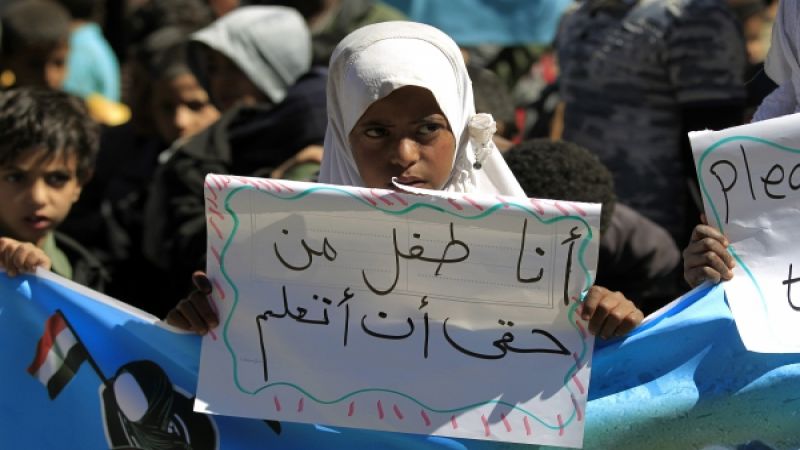
By Sameer Arshad Khatlani
When the civil war in Yemen between … resigned President Abdrabbuh Mansour Hadi’s loyalists and Houthi revolutionaries started in 2015, the Arab world’s poorest countries imported 90 per cent of its needs. The imports included fuel needed to operate pumps to draw and supply potable water in the arid southern Arabian Peninsula country. As the conflict escalated and Hadi’s backers, the Saudi Arabia-led coalition, enforced an embargo to bring the Houthis to their knees, the imports dried up and left most of the pumps dysfunctional. The situation forced tens of thousands of people to drink whatever water was available, accentuating the worst by-product of the least talked about conflict: cholera. The epidemic is the worst in recent history with a million cases feared by the year end. Most of them — 6,00,000 — are likely to be children.
International Committee of the Red Cross (ICRC) vice-president Christine Beerli said the epidemic has highlighted what “a horrible catastrophic situation” the conflict has turned out to be. Beerli, whose organization is among a handful working across Yemen, said their work in the country has been tougher in part because “almost nobody is speaking of the conflict’’, even in the western media.
The epidemic, Beerli underlined, is not unrelated to the conflict and the embargo. “After the embargo nothing came in anymore; no drugs, no pharmaceutical items, no food but also no fuel. [When] there is no fuel, you cannot… [operate] water pumps anymore so people had to consume dirty water which is one of the causes of cholera,’’ Beerli told The Indian Express. She said the ICRC, one of the few humanitarian organizations active there since the beginning of the conflict, is working throughout Yemen — in Hodeida, Aden, Sana’a and Saada — as the epidemic shows no signs of abating. “You have around 800,000 people sick with cholera… And on top of it, only 35 per cent of the medical facilities are working anymore and the rest have been destroyed,” Beerli said.
…
The ICRC was able to bring in planes with relief goods as the embargo was partially lifted … , thanks to its “structured relationship” with all the parties to the conflict. “(It) was very difficult (earlier) to bring in drugs or even chlorine… to purify water. We tried to bring in things — drugs and chlorine — but they were stopped in these last few weeks when there was a very sharp embargo and closure also of the airports. Now we are able to again do it with big intervention from the whole humanitarian community.”
But Beerli emphasized that the kind of relief they have brought is never enough. “Because it is an immense catastrophe and one organization cannot bring the total relief. It needs much more. We need the country to be on its own strength. It needs imports, it needs revival of economy,” she said.
Children have been very prone to Cholera and the worst hit. “Often parents bring cholera-stricken children to hospitals, who are almost dead. Our people are working in life-saving situations. They often take patients to hospitals at the last minute; give them an infusion and drugs. What is traumatic is cholera is not a deadly disease,’’ said Beerli, a former Swiss lawmaker. “If you are looked after on time, then you can be healed. But the problem is that a lot of people who are not living near a health facility are too late. And often children are the victims.”
No country for children: No schools, food
Yemen-based United Nations Children’s Fund (UNICEF) Communication and Advocacy chief Rajat Madhok called the country one of the worst places to be a child right now. He has witnessed “a drastic escalation in violence” in Yemen, especially in Sana’a. The street fighting has led to the closure of schools and forced residents to remain indoors.
“Aid workers including UNICEF’s are on a complete lockdown in the city,” Madhok told The Indian Express in an email interview. “Ambulances and medical teams can’t access the injured; people trapped in the fighting cannot buy food and other essential supplies.” Aid workers have been forced to cancel travel and pause life-saving programs.
Madhok said the latest violence could not have come at a worse time. “ICRC has reported that at least 125 people including children have fallen victims to stray bullets, shrapnel, airstrikes or snipers in the last few days alone,” he said.
UNICEF was forced to halt its emergency relief program in Sana’a. “There is no way any staff or partners can move supplies including lifesaving medicines to hospitals or health facilities because of the intense fighting,’’ said Madhok. “In other governorates, where access is still possible, UNICEF continues to provide humanitarian services to those in need. But currently in Sana’a there is no way we can reach those in need.”
Madhok said at least 5,000 children have been killed or seriously injured in the conflict. “This is roughly five children killed or injured every day in Yemen. These are verified figures and actual numbers are likely to be much higher,’’ he said. “Besides the immediate danger to their lives, children who face conflict from such close quarters are most prone to post traumatic stress disorder which can affect their overall development and growth. The sounds of war will ring in their ears for long.”
Source: India Express, Edited by Website Team